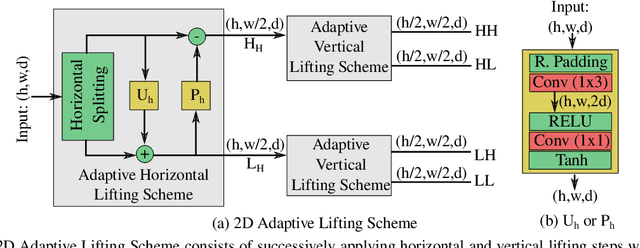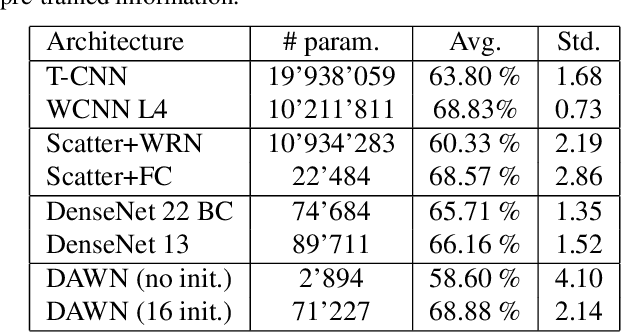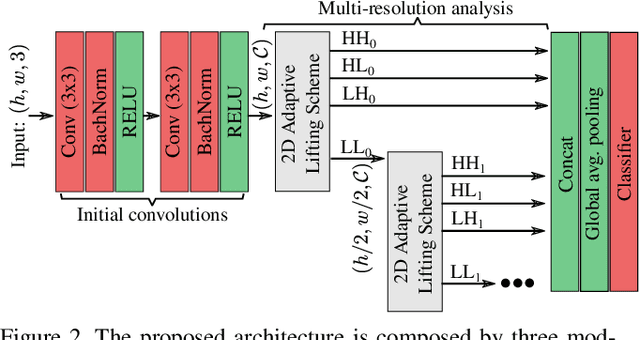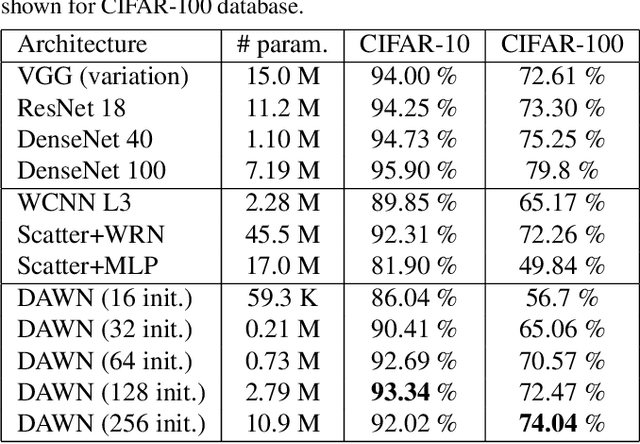Kohei Takayama
Deep Adaptive Wavelet Network
Dec 10, 2019



Abstract:Even though convolutional neural networks have become the method of choice in many fields of computer vision, they still lack interpretability and are usually designed manually in a cumbersome trial-and-error process. This paper aims at overcoming those limitations by proposing a deep neural network, which is designed in a systematic fashion and is interpretable, by integrating multiresolution analysis at the core of the deep neural network design. By using the lifting scheme, it is possible to generate a wavelet representation and design a network capable of learning wavelet coefficients in an end-to-end form. Compared to state-of-the-art architectures, the proposed model requires less hyper-parameter tuning and achieves competitive accuracy in image classification tasks
Wavelet Convolutional Neural Networks
May 20, 2018



Abstract:Spatial and spectral approaches are two major approaches for image processing tasks such as image classification and object recognition. Among many such algorithms, convolutional neural networks (CNNs) have recently achieved significant performance improvement in many challenging tasks. Since CNNs process images directly in the spatial domain, they are essentially spatial approaches. Given that spatial and spectral approaches are known to have different characteristics, it will be interesting to incorporate a spectral approach into CNNs. We propose a novel CNN architecture, wavelet CNNs, which combines a multiresolution analysis and CNNs into one model. Our insight is that a CNN can be viewed as a limited form of a multiresolution analysis. Based on this insight, we supplement missing parts of the multiresolution analysis via wavelet transform and integrate them as additional components in the entire architecture. Wavelet CNNs allow us to utilize spectral information which is mostly lost in conventional CNNs but useful in most image processing tasks. We evaluate the practical performance of wavelet CNNs on texture classification and image annotation. The experiments show that wavelet CNNs can achieve better accuracy in both tasks than existing models while having significantly fewer parameters than conventional CNNs.
Wavelet Convolutional Neural Networks for Texture Classification
Jul 24, 2017



Abstract:Texture classification is an important and challenging problem in many image processing applications. While convolutional neural networks (CNNs) achieved significant successes for image classification, texture classification remains a difficult problem since textures usually do not contain enough information regarding the shape of object. In image processing, texture classification has been traditionally studied well with spectral analyses which exploit repeated structures in many textures. Since CNNs process images as-is in the spatial domain whereas spectral analyses process images in the frequency domain, these models have different characteristics in terms of performance. We propose a novel CNN architecture, wavelet CNNs, which integrates a spectral analysis into CNNs. Our insight is that the pooling layer and the convolution layer can be viewed as a limited form of a spectral analysis. Based on this insight, we generalize both layers to perform a spectral analysis with wavelet transform. Wavelet CNNs allow us to utilize spectral information which is lost in conventional CNNs but useful in texture classification. The experiments demonstrate that our model achieves better accuracy in texture classification than existing models. We also show that our model has significantly fewer parameters than CNNs, making our model easier to train with less memory.
 Add to Chrome
Add to Chrome Add to Firefox
Add to Firefox Add to Edge
Add to Edge